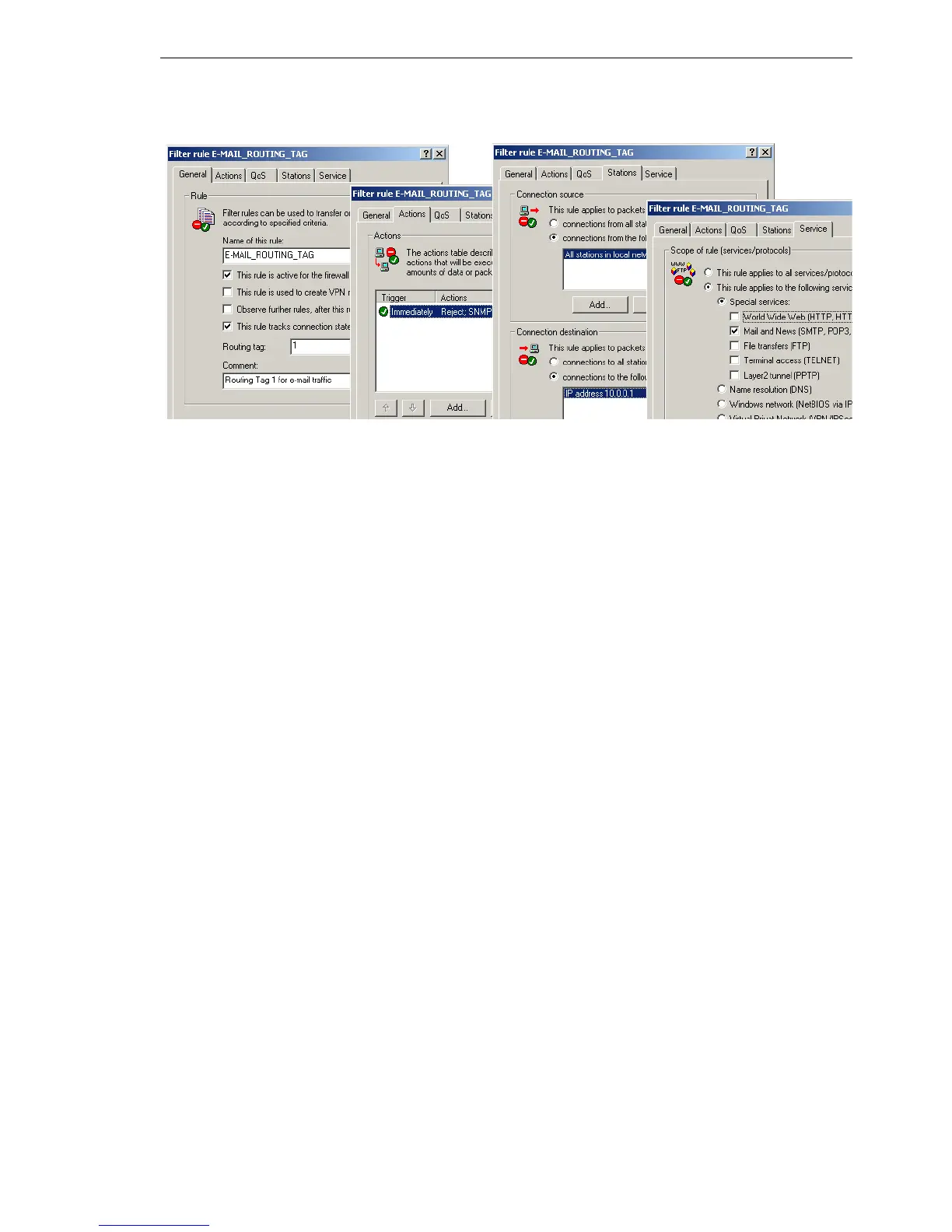Routing and WAN connections
BAT54-Rail/F..
Release
7.54
06/08
11.9
N:N mapping
425
11.9N:N mapping
Network Address Translation (NAT) can be used for several different mat-
ters:
D for better utilizing the IP4 addresses ever becoming scarcer
D for coupling of networks with same (private) address ranges
D for producing unique addresses for network management
In the first application the so-called N:1 NAT, also known as IP masquerading
(’IP masquerading’ → page 369) is used. All addresses (“N”) of the local net-
work are mapped to only one (“1”) public address. This clear assignment of
data streams to the respective internal PCs is generally made available by
the ports of the TCP and UDP protocols. That’s why this is also called NAT/
PAT (Network Address Translation/Port Address Translation).
Due to the dynamic assignment of ports, N:1 masquerading enables only
those connections, which have been initiated by the internal network. Excep-
tion: an internal IP address is statically exposed on a certain port, e.g. to
make a LAN server accessible from the outside. This process is called “in-
verse masquerading” (’Inverse masquerading’ → page 372).
A N:N mapping is used for network couplings with identical address ranges.
This transforms unambiguously multiple addresses (“N”) of the local network
to multiple (“N”) addresses of another network. Thereby, an address conflict
can be resolved.
Rules for this address translation are defined in a static table in the BAT.
Thereby new addresses are assigned to single stations, parts of the network,
or the entire LAN, by which the stations can contact other networks then.

